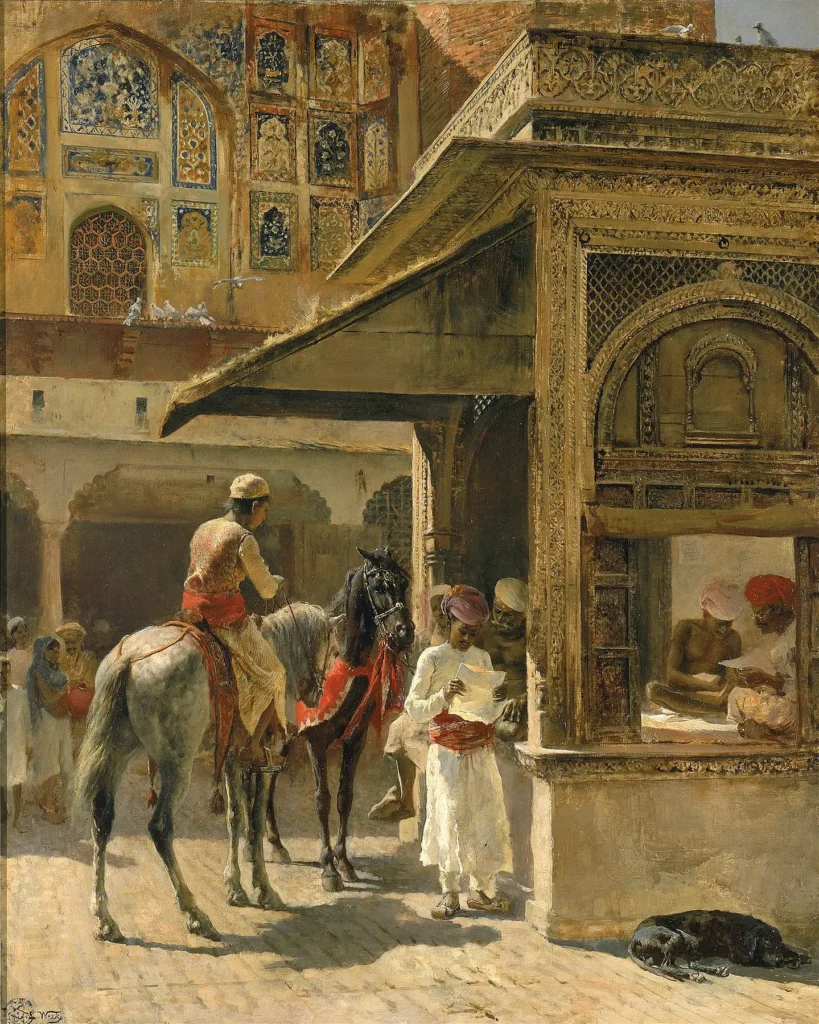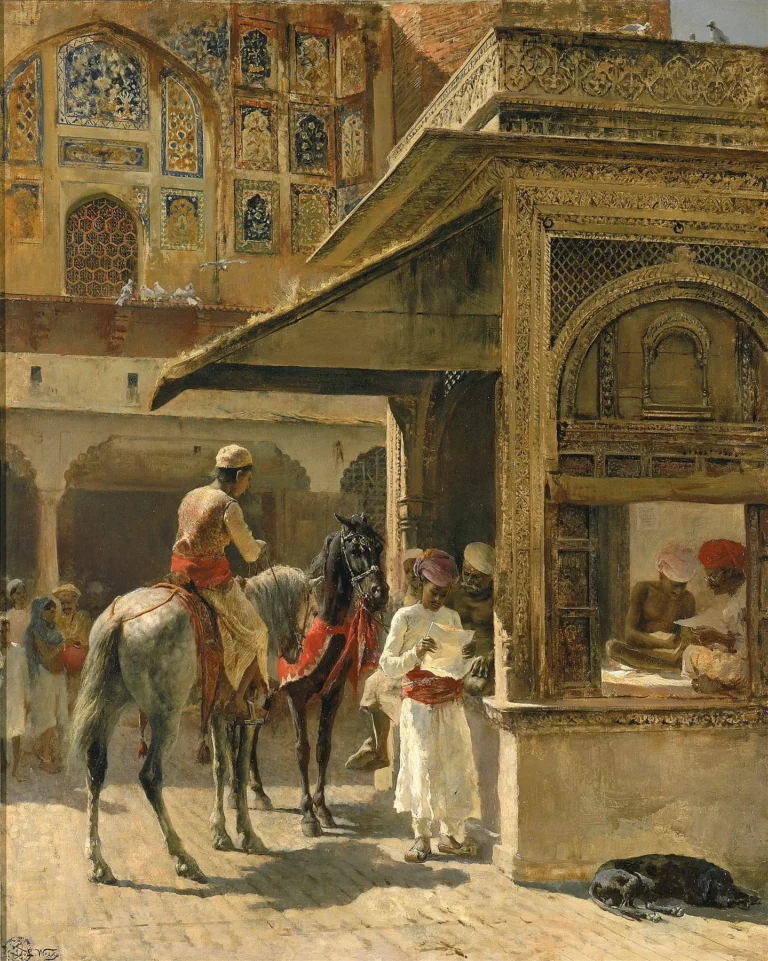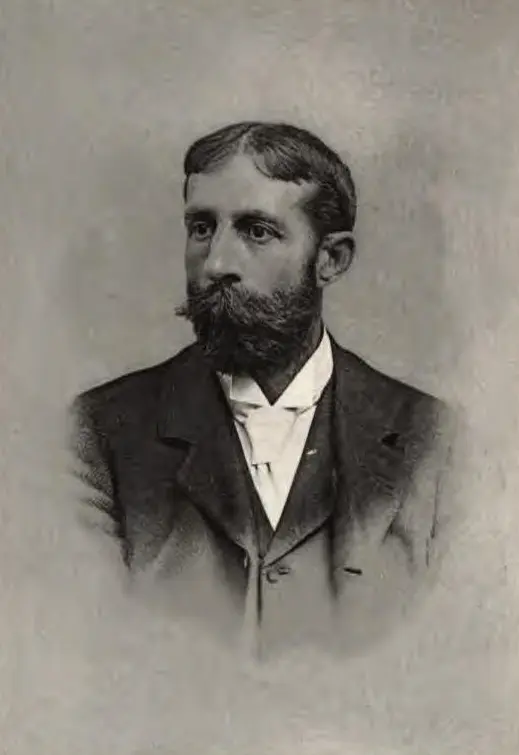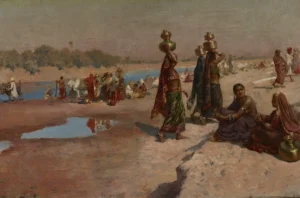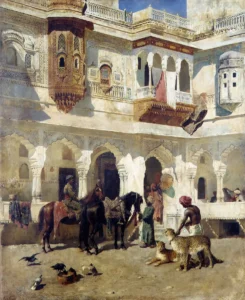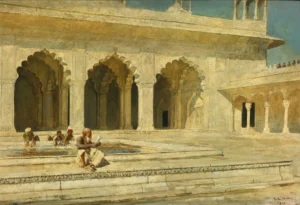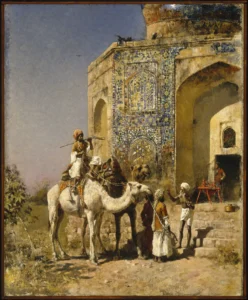Hindu Merchants (ca. 1885)
Created circa 1885, Hindu Merchants by Edwin Lord Weeks offers a striking glimpse into the daily lives of Hindu merchants in an Indian marketplace. Painted during Weeks' travels in India, the artwork is characterized by its vibrant colors and intricate architectural details, showcasing the merchants amidst dogs and horses. This piece exemplifies Weeks’ fascination with Indian culture and his ability to capture its essence through careful observation and artistic skill.
Circa 1885
About the Artwork
Did You Know
Liked what you see? Add it to your collection.
Enjoyed reading? Share it.
... continued
Artist and Background
Edwin Lord Weeks was an American artist, adventurer, travel writer, and cultural commentator born in Boston, Massachusetts in 1849. He was a pupil of renowned artists Léon Bonnat and Jean-Léon Gérôme in Paris and traveled extensively throughout North Africa, the Middle East, and India.
Travel and Inspiration
Weeks traveled to India in 1882, a journey that profoundly influenced his work. He was particularly drawn to the everyday lives of people in the streets, rather than the royalty, and his paintings often captured the vibrant street life, monumental architecture, and rich cultural details of India.
Painting Details
- Title: Hindu Merchants
- Date: ca. 1885
- Medium: Oil on canvas
- Dimensions: 28 3⁄8 x 22 7⁄8 inches (72.2 x 58.0 cm)
- Location: Smithsonian American Art Museum, Washington, D.C.
- Credit Line: Bequest of Emily Tuckerman, 1924.7.1.
Composition and Themes
The painting depicts a scene of Hindu merchants in an Indian market setting. It features a group of men, along with animals such as dogs and horses, set against the backdrop of elaborately carved and decorated commercial architecture. Weeks' attention to detail in dress, customs, and architectural elements highlights his appreciation for the visual sophistication of Indian civilization.
Significance
Hindu Merchants is part of Weeks' body of work that brought alive a culture that was largely unfamiliar to his American patrons. His paintings were exhibited internationally, including at the Paris Salon, and are noted for their fresh, bold, and conceptually innovative portrayal of India, distinguishing him from other Orientalist painters of his time.




